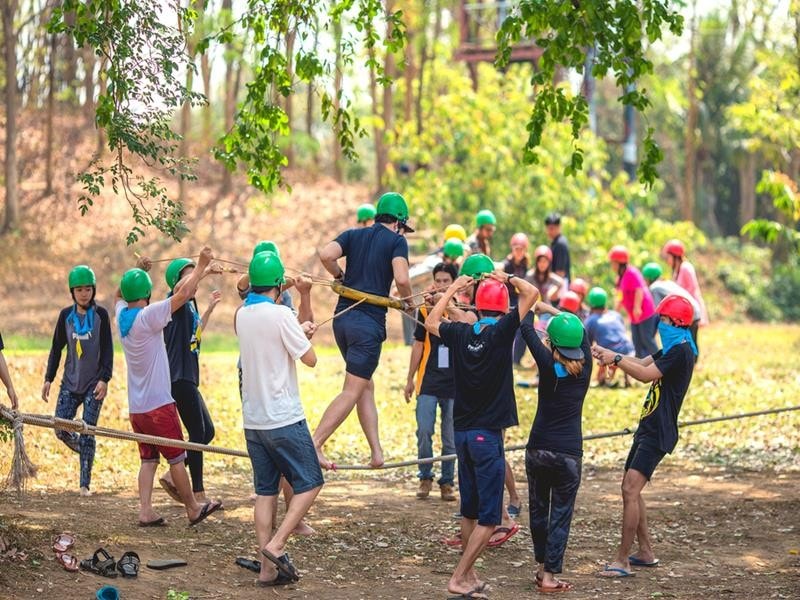Both new and old equipment suffer from monotony and stagnant interactions that limit the effectiveness and achievement of objectives. Hence the need to create group activities that distract staff from their daily tasks by injecting a good dose of motivation and teamwork.
Team building is a term for the different types of activities that are used to improve social relationships and define roles within teams, often with collaborative tasks. Many team building exercises aim to expose and address interpersonal problems within the group.
Full Team Building Definition
Team Building is the process of bringing together a group of employees to perform common activities. A team is a group of people organized to work together in an interdependent and cooperative manner to meet the needs of their customers through the fulfillment of their purposes and objectives.
Team building can include the daily interaction in which employees participate as they work together to meet the requirements of their jobs. It can also include structured activities and exercises that employees can lead. Or, with the right budget and objectives, managers can hire this facilitation service as an outside resource.
No matter how you choose to form a group of employees into a team, the resulting ties will allow the work and objectives of the organization to be accomplished more effectively than an unrelated group. As long as your focus is on team building opportunities that lend themselves to the real work of the team, you will be building a team effectively.

Internal Team Building
An internal team building session can be carried out with groups of employees from the same department or mixing people from different areas. Often, the team leader or manager will facilitate a series of meetings so that employees can get to know each other and develop working relationships.
In a larger organization, the organization’s development staff can lead team building sessions. Many HR professionals feel comfortable leading team building sessions.
Team building does not always have to be through a meeting or facilitated meeting to achieve the goal of a united team. Team building can be designed based on fun activities and events in which team members can live together and get out of the routine. An example is having a picnic once a week with your team members. In this way, people will be able to live in a different context and bond beyond work.
Serving pizza once a month or having lunch in a restaurant are other ways to do team building sessions. The goal is to share with employees an atypical moment in which everyone gets together to live together and spend quality time. Other examples of team building include organizing a bowling session, Christmas lunches, master-guided painting, cruises, stand-up functions and sporting events.
Really, the options your team can attend for a team building session are endless. The only caveat is that you must remember that some physically challenging activities, such as rock climbing and mountain tours, can be frightening to some members and not everyone is qualified to do these types of activities. Therefore, to achieve a successful team building, organize something fun that does not involve any kind of extreme activities.
External team building
When an external facilitator is used for a team building session, groups can participate in structured activities that are designed to help employees join and feel part of a team. In general, with his or her experience, the facilitator works with a group of employees to design team building activities or sessions in a personalized way.
These sessions may include icebreakers, discussion topics, games, cooperative tasks and group brainstorming. The role of the external facilitator in these types of events is to help build team cohesion and improve interpersonal relationships. Team building activities can take place both inside and outside the office, although it is always recommended that they be done outside the office to change the framework.
The team building in general has a positive impact on the organization as long as there is a follow-up plan so that it does not remain an event of punctual amusement. Make sure that the event is integrated into a daily framework so that the results continue after the event.
If you want to have an effective team that delivers good results, you must pay attention to both the process and team building. 80% of a team’s business success is due to good relationships within the team.


